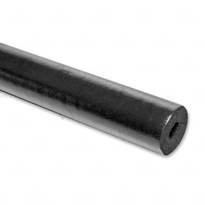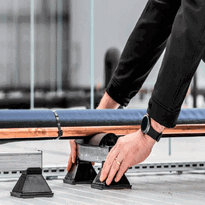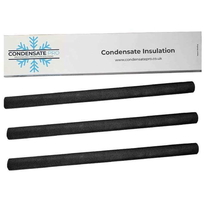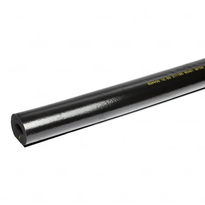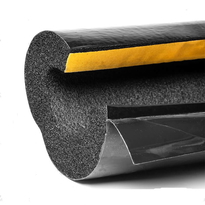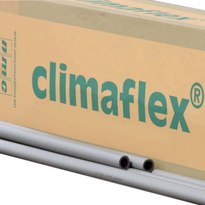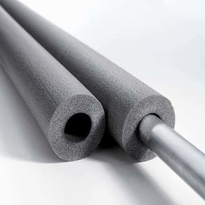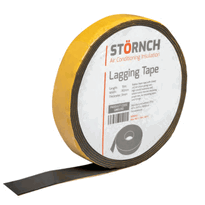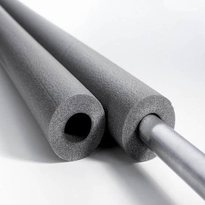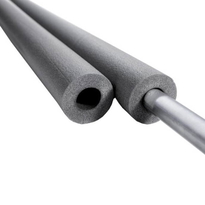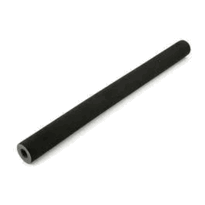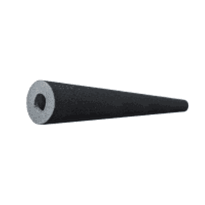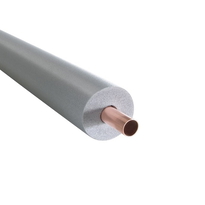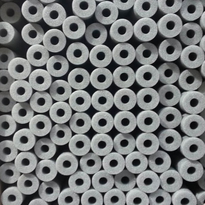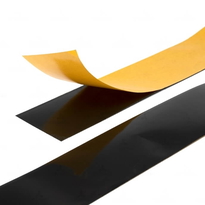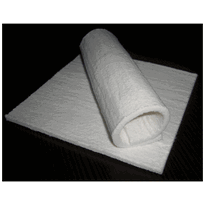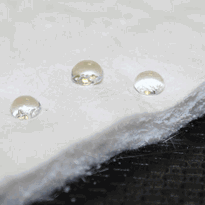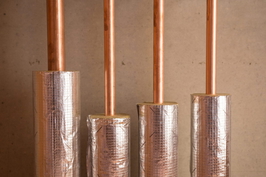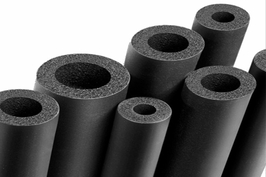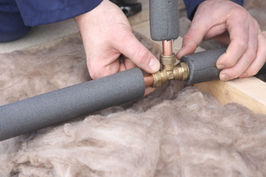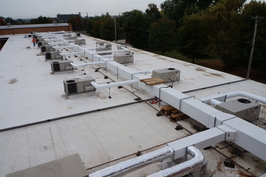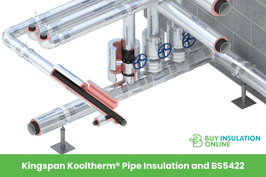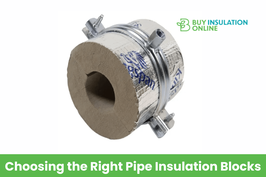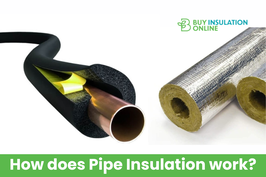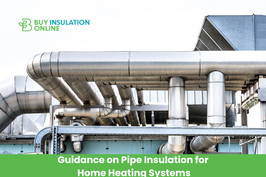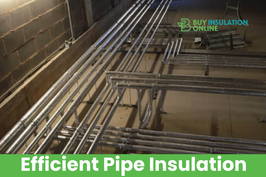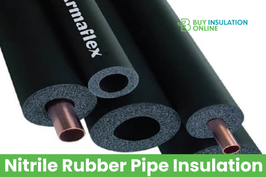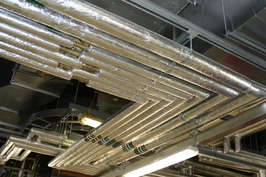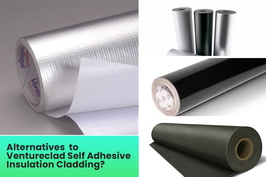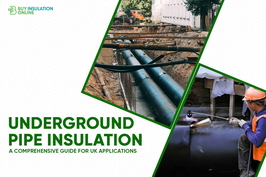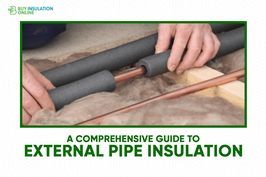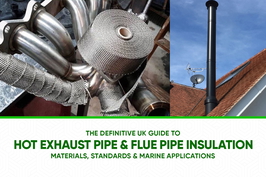Outdoor Pipe Insulation Waterproof
Outdoor pipe insulation is best protected with waterproof materials such as EPDM rubber, closed-cell foam like polyethylene or polyurethane, and rubber-based insulations such as Nitrile. These materials effectively resist moisture, UV rays, and temperature fluctuations, ensuring long-lasting durability.
Proper sealing, the use of protective outer jackets, and high-quality installation are crucial to prevent water infiltration and subsequent damage. Choosing the right insulation material depends on the specific environment and requirements, and understanding the optimal options can significantly enhance the longevity of outdoor pipes.
In the UK, it is particularly important to consider the local climate when selecting insulation, as temperature variations and rainfall can impact the effectiveness of the chosen material. Prioritising quality and suitability will not only protect your pipes but also contribute to overall energy efficiency.
Types of Waterproof Materials for Outdoor Pipe Insulation
When selecting outdoor pipe insulation, it's essential to consider waterproof materials that safeguard pipes from moisture and weather-related damage. EPDM rubber insulation is exceptionally durable and resistant to UV rays, making it ideal for outdoor use in a variety of weather conditions. Its flexibility enables it to fit irregular pipes effortlessly, providing effective insulation against temperature extremes. EPDM rubber's high UV resistance makes it particularly suited for prolonged outdoor exposure. Nitrile rubber, such as Armaflex Tuffcoat, features a closed-cell structure that serves as a moisture barrier and resists mechanical impacts, making it suitable for both exposed and underground pipes. Foam insulations, including polyurethane or phenolic foam, are effective in preventing condensation and protecting against cold temperatures, thereby reducing the risk of corrosion. Fibreglass with waterproof jackets employs protective coverings that shield pipes from rain and humidity, ensuring reliable performance over time. These materials work together to keep pipes dry and functional in outdoor environments, fostering a sense of security and belonging for property owners.
Key Properties of Waterproof Outdoor Pipe Insulation
Waterproof outdoor pipe insulation must efficiently resist water absorption and moisture infiltration to maintain optimal thermal performance. Materials featuring closed-cell structures are particularly effective, as they prevent water from penetrating, unlike open-cell varieties that permit moisture flow, potentially diminishing insulation efficacy. Proper installation techniques are also crucial to ensure that water does not infiltrate through seams or attachments. Moreover, the insulation should demonstrate durability against various environmental factors, including UV rays, fluctuations in temperature, and physical wear. This resilience ensures that the insulation remains dependable over time, providing consistent protection and energy efficiency. Choosing the right waterproof insulation will significantly contribute to the longevity and effectiveness of your outdoor piping systems.
Moisture Resistance Features
Moisture resistance is an essential feature of outdoor pipe insulation as it safeguards pipes from water damage and maintains thermal efficiency. Closed-cell foams, such as polyethylene and polyurethane, possess sealed, non-interconnecting cells that effectively impede moisture absorption and transmission. This design prevents water from wicking through the insulation, ensuring that the pipe surface remains dry and that heat retention is consistent.
Moreover, these foams fully encapsulate pipes, establishing a robust barrier against moisture, even in wet or flooded conditions. To enhance waterproofing, protective outer layers—such as PVC jackets, vapour barriers, or coatings—are often incorporated. These barriers prevent water from infiltrating gaps or seams, further bolstering the insulation's effectiveness.
Proper installation is equally important; ensuring a tight fit and sealing of joints significantly enhances moisture resistance. This meticulous approach makes outdoor pipe systems more durable and reliable against the elements, ultimately prolonging their lifespan and performance.
Durability Against Elements
Materials utilised for outdoor pipe insulation must endure harsh environmental conditions to retain their effectiveness over time.
EPDM rubber, renowned for its durability, resists UV radiation, thereby prolonging its lifespan when exposed to sunlight. Unlike some foam insulations that deteriorate swiftly under UV rays, EPDM degrades more slowly, preserving its flexibility and preventing surface cracks. UV resistance is a crucial property for outdoor insulation materials, as it significantly contributes to their longevity. It also withstands temperature fluctuations, performing well in both warm and cold climates. Additionally, it resists impact and compression, ensuring it remains intact despite physical wear.
EPDM’s resistance to corrosion safeguards metal pipes from damage, while its capability to inhibit microbial growth enhances its usability.
Closed-cell foams, such as polyethylene, further bolster durability by preventing water penetration and maintaining insulation even when subjected to severe weather conditions.
Together, these materials provide long-lasting protection against the elements, ensuring outdoor pipe insulation remains effective throughout its service life.
Common Materials Used in Outdoor Pipe Insulation
Common materials used in outdoor pipe insulation include various foam, rubber, and mineral-based options, each offering distinct advantages for specific applications. Polyethylene insulation is lightweight, flexible, and resistant to moisture absorption, making it easy to handle and suitable for both residential and commercial needs, particularly in cooling systems. Polyurethane provides excellent insulation and durability, making it ideal for outdoor refrigeration and chilled water pipes, ensuring long-lasting thermal efficiency. Armacell Tuffcoat, a nitrile foam, features a self-sealing plastic coating that resists water and impact, making it perfect for underground pipes. Rubber insulation is versatile, offering protection against temperature fluctuations and moisture in harsh environments. Mineral wool and fibreglass options excel in high-temperature outdoor settings, although they require protective coatings to prevent water damage. Different insulation materials are also selected based on their fire resistance and noise reduction properties, which are crucial in outdoor settings. Selecting the right insulation material is essential for maintaining the efficiency and longevity of your piping systems in outdoor conditions.
Installation Tips for Outdoor Waterproof Pipe Insulation
Proper sealing techniques are crucial for preventing water ingress into outdoor pipe insulation, which can lead to damage over time. Employing waterproof tape and sealants at seams and joints forms a moisture-resistant barrier, ensuring the insulation remains effective. Additionally, mechanical protection, such as snug wrapping and secure fastening, safeguards the insulation against physical damage and adverse weather conditions. Weatherproofing pipe insulation is vital for maintaining its functionality and prolonging its lifespan by keeping moisture out and preventing deterioration caused by exposure to the elements.
Proper Sealing Techniques
To ensure outdoor pipe insulation remains effective, careful sealing around pipe penetrations and joints is essential. Flexible sealants or mastic compounds that are rated for outdoor use are ideal for sealing gaps around fittings and valves. It's also important to select sealants that are compatible with the insulation material and weather conditions in your area. Applying multiple layers of sealing tape or ensuring overlaps are wrapped tightly helps to keep water out. Installing foam or rubber gaskets beneath flanges or at sleeve ends provides additional protection against water ingress. Precision is crucial when cutting insulation to fit irregular shapes; avoid compressing the material, as this diminishes its thermal performance. Regular inspection is vital—reapply sealants or tape if any signs of water infiltration are detected. Sealants that are weather-resistant provide better long-term protection against moisture penetration. Employing proper sealing techniques safeguards pipes from moisture and damage, ensuring outdoor insulation performs reliably over time while maintaining a robust waterproof barrier against the elements.
Ensuring Mechanical Protection
Outdoor pipe insulation requires effective mechanical protection to ensure it remains intact and performs well over time. Employing weather-resistant jackets, such as aluminium, helps withstand UV rays, rain, wind, and temperature fluctuations, thereby extending the lifespan of the insulation. Mechanical protection is essential to prevent physical damage from impacts or environmental stressors. These jackets should be suitable for the environmental conditions and flexible enough to accommodate pipe expansion and contraction, preventing the risk of cracks. Proper fastening using corrosion-resistant wire, tape, or clamps secures the insulation firmly without causing damage. It's essential to regularly check and tighten fasteners to prevent slippage caused by weather or vibrations. To safeguard the ends of the insulation, utilise sealants, caps, or moisture barriers to deter water and air leaks. Overlapping layers and weatherproof tape can further block moisture ingress, while periodic inspections are crucial for identifying and repairing any damage. This maintenance ensures the durability and effectiveness of the insulation system, providing reliable protection for outdoor piping.
Performance Standards and Suitable Outdoor Applications
Performance standards for outdoor pipe insulation are crucial to guarantee durability, safety, and effective thermal protection in adverse weather conditions.
Insulation materials must comply with recognised standards for size and properties. Protective coverings should be water-resistant and UV-stable to prevent damage from sunlight.
Vapour barriers or coatings are essential for chilled water and refrigerant lines to avoid moisture accumulation, with sealed joints to prevent leaks. Insulation must exhibit low water vapour absorption, and flame spread ratings must adhere to fire safety regulations.
Suitable materials include mineral fibre types with vapour-retarder jackets, elastomer foam with fire retardants, and robust protective covers. Meeting industry safety standards is vital for ensuring the reliable performance of outdoor pipe insulation.
Proper installation, which includes continuous vapour barriers and physical protections, is vital for ensuring long-lasting outdoor performance.
This attention to detail in materials and methods contributes significantly to the effectiveness and reliability of outdoor pipe insulation in the UK.
Market Options and Product Recommendations
There are various waterproof pipe insulation options available in the UK market, each offering distinct features suitable for outdoor applications.
Elastomeric rubber, particularly nitrile foam, is renowned for its closed-cell structure, which effectively resists water and prevents moisture ingress. This material also maintains its flexibility across a broad temperature range, making it ideal for outdoor environments.
Polyethylene foam with a UV-resistant coating is another widely favoured choice, especially for outdoor use, as it provides excellent moisture resistance and protection from sunlight.
Phenolic foam offers initial water resistance but requires a waterproof cladding, such as aluminium, for long-term durability in outdoor settings.
Additionally, some products, like Armacell Tuffcoat, combine foam with self-sealing plastic coatings, enhancing their waterproofing and impact resistance.
These insulation options are lightweight, flexible, and designed to endure outdoor conditions, making them ideal for ensuring that pipes remain insulated and shielded from moisture and adverse weather.
Conclusion
Choosing the right waterproof pipe insulation is crucial for outdoor applications in the UK. Various materials, such as foam, rubber, and fibreglass, offer distinct levels of protection and durability against the elements.
Proper installation is key to ensuring long-lasting performance, while compliance with safety standards enhances both safety and efficiency.
By understanding the properties and available options, homeowners and professionals alike can select insulation that effectively prevents pipe damage caused by moisture, temperature fluctuations, and adverse weather conditions.
This thoughtful selection not only helps maintain the integrity of pipes but also minimises maintenance requirements over time.
